Progress in the study of visual phantoms
Akiyoshi Kitaoka (Ritsumeikan University)
Presented in the 37th meeting of the Chikaku Colloquium (Meeting of Perception), Kaminoyama-onsen,Yamagata-ken, Japan (March 29 - 31, 2004)
Presented March 31, 2004, using this page
since June 25, 2004
Summary. Here I demonstrate the study of visual phantoms from Rosenbach (1902) to the latest novel findings (e.g. Craik-O'Brien-Cornsweet phantoms). It is suggested that the visual phantom illusion involves high-order visual processing, involving perceptual transparency.
Kitaoka, A. (2004) Progress in the study of visual phantoms. Paper presented in the 37th meeting of the Chikaku Colloquium (Meeting of Perception), March 31, 2004, Kaminoyama-spa,Yamagata, Japan
Black phantoms (standard type)
The visual phantom illusion refers to a phenomenon that an illusory grating appears to bridge the occluder that occludes a luminance-modified grating. When the luminance of the occluder is the lowest luminance of the grating, dark parts appear to be bridged or be continual. It is also characterized by the phenomenon that phantoms always appear in front of the occluder.
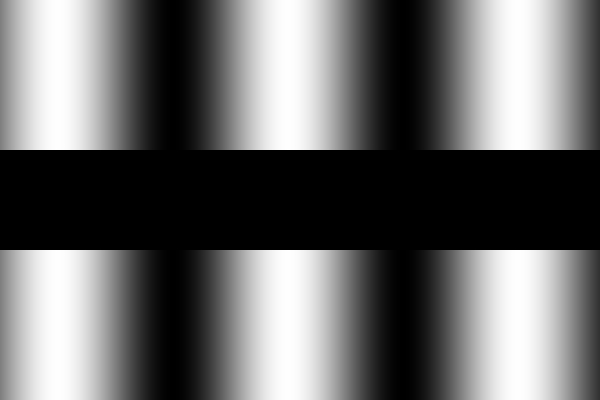
Tynan, P. & Sekuler, R. (1975). Moving visual phantoms: A new contour completion effect. Science, 188, 951-952. PubMed
Genter, C. R. II. & Weisstein, N. (1981). Flickering phantoms: A motion illusion without motion. Vision Research, 21, 963-966. PubMed
Gyoba, J. (1983). Stationary phantoms: A completion effect without motion and flicker. Vision Research, 23, 205-211. PubMed
White phantoms
When the luminance of the occluder is the highest luminance of the grating, light parts appear to be bridged.
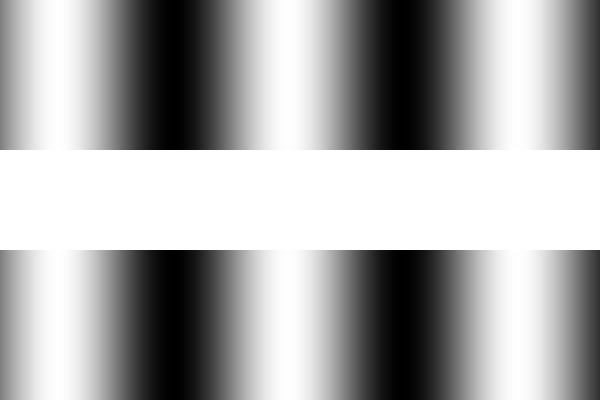
Sakurai, K. & Gyoba, J. (1985) Optimal occluder luminance for seeing stationary visual phantoms. Vision Research, 25, 1735-1740. PubMed
Rosenbach's (1902) study
Under construction
(Rosenbach's demonstration corresponds to moving photopic phantoms)
Rosenbach, O. (1902) Zur Lehre von den Urtheilstauschungen. Zeitschrift fur Psychologie, 29, 434-448.
Moving visual phantoms
Tynan, P. & Sekuler, R. (1975). Moving visual phantoms: A new contour completion effect. Science, 188, 951-952. PubMed
Flickering phantoms
Genter, C. R. II. & Weisstein, N. (1981). Flickering phantoms: A motion illusion without motion. Vision Research, 21, 963-966. PubMed
Stationary phantoms

Gyoba, J. (1983). Stationary phantoms: A completion effect without motion and flicker. Vision Research, 23, 205-211.PubMed
Stationary phantoms prefer low contrast (new!)
Stationary phantoms are manifest when contrast of the inducing grating is low.


An explanation of stationary phantoms
Stationary phantoms are explained in terms of perceptual transparency, in which the surrounding grating induces counterphase lightness induction in the occluder (McCourt, 1994) and generates unique transparency that gives the continuation and the fixed depth of phantoms. The figures show the appearance of stationary phantoms (the upper image) and the explanation in terms of perceptual transparency (the lower image).
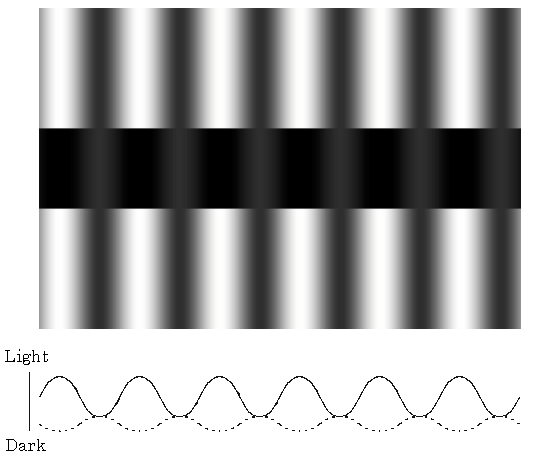
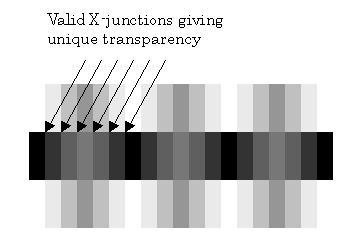
Kitaoka, A., Gyoba, J., Kawabata, H., and Sakurai, K. (2001). Perceptual continuation and depth in visual phantoms can be explained by perceptual transparency. Perception, 30, 959-968. PubMed
"Paradoxical" stationary phantoms (new!)
Although it has long been thought that the visual phantom illusion is a phenomenon of visual completion of lightness, paradoxical phantoms shown below are not paradoxical in the context of perceptual transparency.
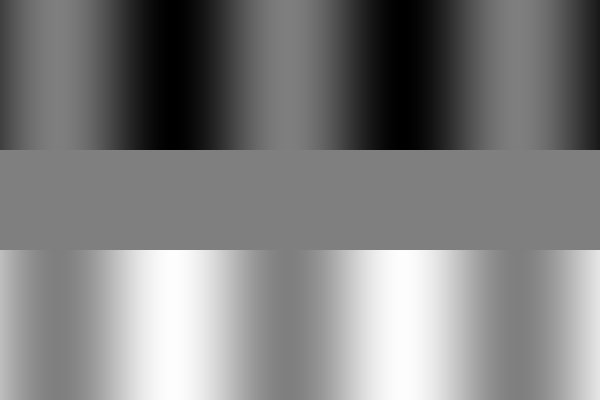
Stereoscopic stationary phantoms
Fusing the two figures, you see two lines of white phantoms in front of the black background.
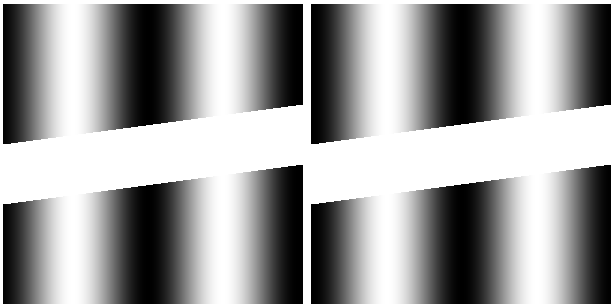
(For cross-fuser only; see the left image with your right eye and the right
image with your left eye)
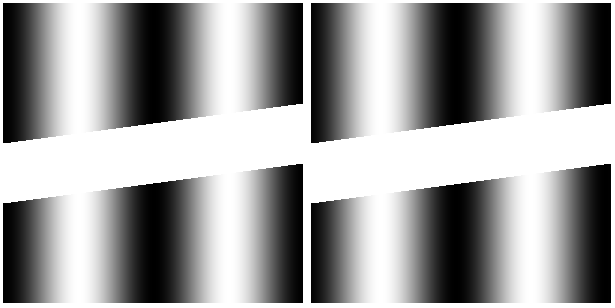
(For uncross-fuser only; see the left image with your left eye and the
right image with your right eye)
Brown JM, Weisstein N (1991) Conflicting figure-ground and depth information reduces moving phantom visibility. Perception 20: 155-65. PubMed
Aligned and misaligned phantoms
When the occluder is placed obliquely on a grating, completion occurs across alinged gratings as well as misalinged (vertical) ones for phantoms. On the other hand, for grating induction, completion occurs only across the latter.
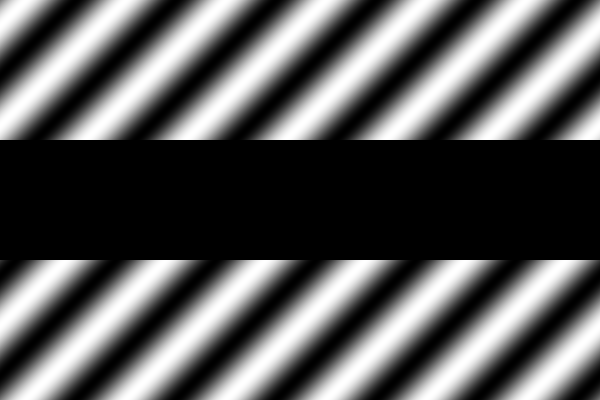
Brown JM, Gyoba J, May JG (2001) Stationary phantoms and grating induction with oblique inducing gratings: implications for different mechanisms underlying the two phenomena. Psychon Bull Rev. 8: 278-83 PubMed
Mist perception by stationary phantoms (new!)
White phantoms frequently give the perception of mist. I think the perception of mist chiefly depends on visual phantoms.
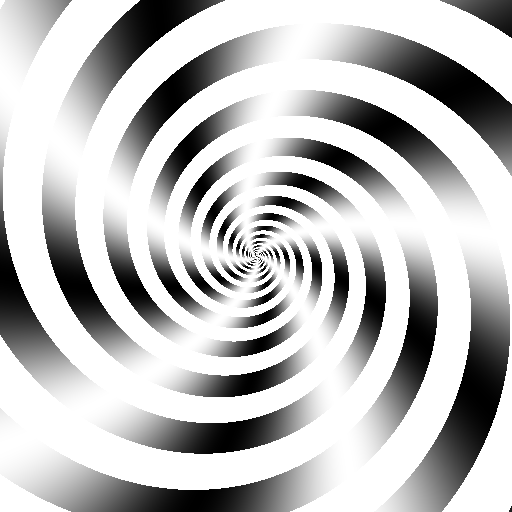
"Phantom spirals 2"
The perception of misty spirals is due to white phantoms.
Copyright A.Kitaoka 2003
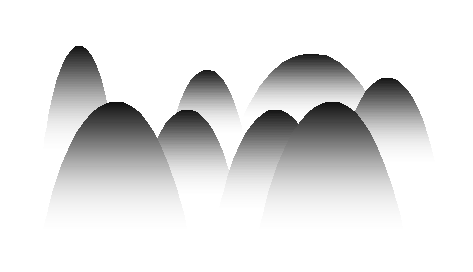
"Mountains"
The perception of mist seems to be due to white phantoms.
Copyright A.Kitaoka 2002
Petter's effect and stationary phantoms
An example of Petter's effect, in which the thick vertical rectangle tends to be perceived in front of the thin horizontal rectangle.
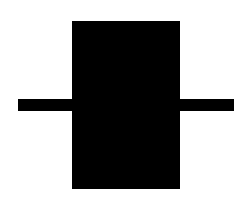
For visual phantoms, the less the spatial frequency of the inducing grating or the shorter the width of the occluder, the more visible the phantoms (the left image). On the other hand, the more the spatial frequency of the inducing grating or the longer the width of the occluder, the less visible the phantoms (the left image). This characteristic resembles that of Petter's effect.

Kitaoka, A., Gyoba, J., Sakurai, K., and Kawabata, H. (2001). Similarity between Petter's effect and visual phantoms. Perception, 30, 519-522. PubMed
Photopic phantoms
An illusory grating in phase with the inducing grating appears BEHIND the occluder. This phantom involves bistable transparency.

Kitaoka, A., Gyoba, J., & Kawabata, H. (1999). Photopic visual phantom illusion: its common and unique characteristics as a completion effect. Perception, 28, 825-834. PubMed
Chromatic phantoms
Color is also completed in photopic phantoms.
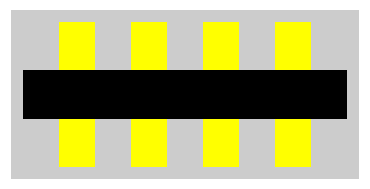
Kitaoka, A., Gyoba, J., & Kawabata, H. (1999). Photopic visual phantom illusion: its common and unique characteristics as a completion effect. Perception, 28, 825-834. PubMed
Stereoscopic enhancement of photopic phantoms
The illusory contours of photopic phantoms are more distinct when they have crossed disparity. For cross fuser, fuse the left and middle panel; for uncross fuser, fuse the middle and right panel.
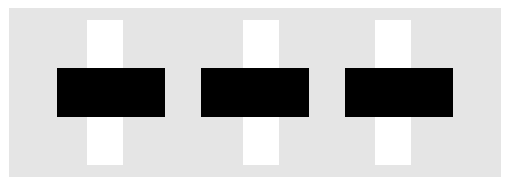
Kitaoka, A., Gyoba, J., & Kawabata, H. (1999). Photopic visual phantom illusion: its common and unique characteristics as a completion effect. Perception, 28, 825-834. PubMed
Neon phantoms
Even if the height of the inducing grating of photopic phantoms is decreased, phantoms remain. We call them "neon" phantoms because it resembles neon color spreading.
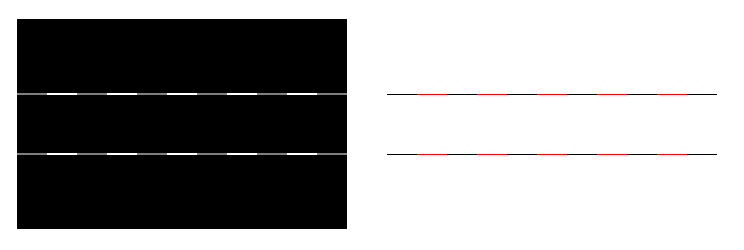
Kitaoka, A., Gyoba, J., Kawabata, H., and Sakurai, K. (2001) Two competing mechanisms underlying neon color spreading, visual phantoms and grating induction. Vision Research, 41, 2347-2354. PubMed
Contrast-based phantoms (Second-order phantoms)
Low-contrasted regions appear to form visual phantoms.
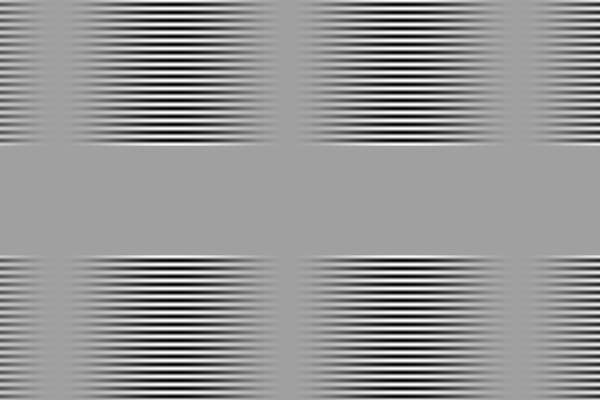
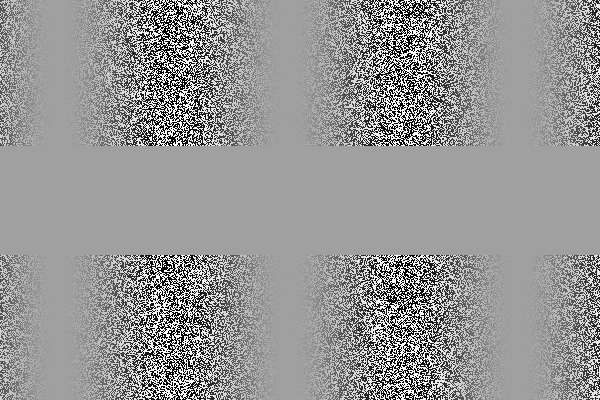
Gyoba, J., Sasaki, H., & Sakurai, K. (2000). Visual phantoms can be produced by second-order gratings. Investigative Ophthalmology & Visual Science, 41, S228 (Abstract no. 1198).
Stereoscopic contrast-based phantoms (new!)
Fusing the two figures, you see a transparent square in front of the background. This means that regions of lower contrast tend to form phantoms.
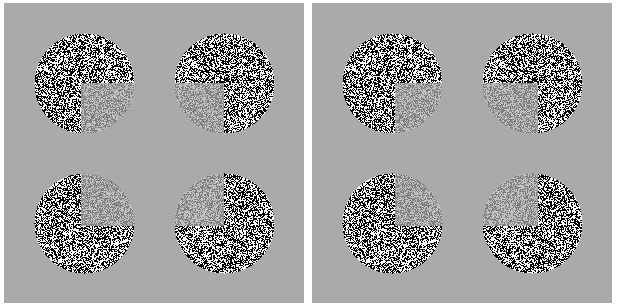
(For cross-fuser only; see the left image with your right eye and the right
image with your left eye)
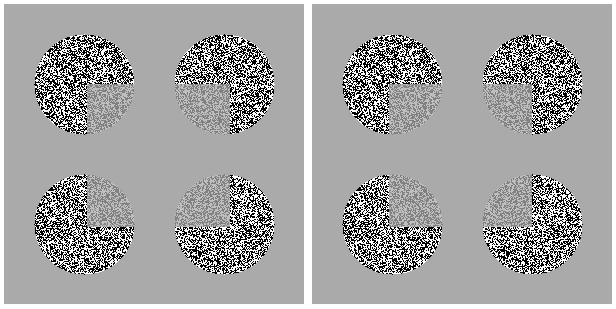
(For uncross-fuser only; see the left image with your left eye and the
right image with your right eye)
Chimera phantoms
Phantoms appear between a luminance-modified grating and a contrast-modified grating. This is called "chimera" phantoms.
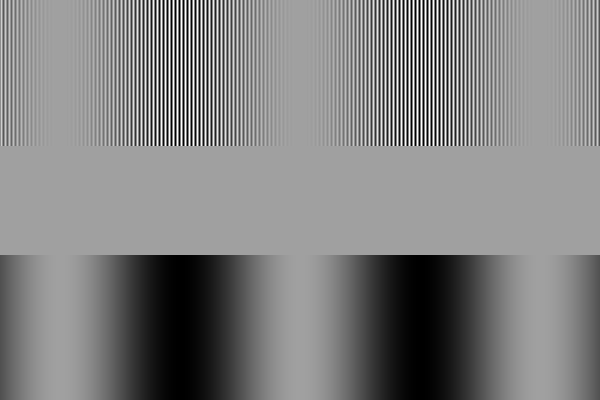
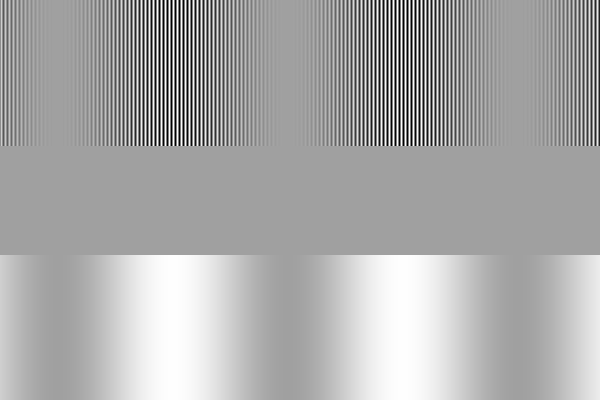
Kitaoka, A., Gyoba, J., and Sakurai, K. (2000) The role of perceptual transparency on second-order phantoms. Paper presented at the 19th meeting of the Japanese Psychonomic Science, December 12, 2002, Ritsumeikan University, Kyoto, Japan. (The posters are available though they are written in Japanese (MS-Word file with Japanese fonts))
Stereoscopic chimera phantoms (new!)
Fusing the two figures, you see two lines of "mist" in front of the background. These are stereoscopic chimera phantoms.
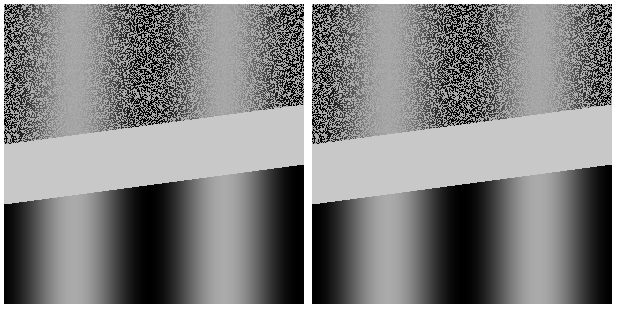
(For cross-fuser only; see the left image with your right eye and the right
image with your left eye)
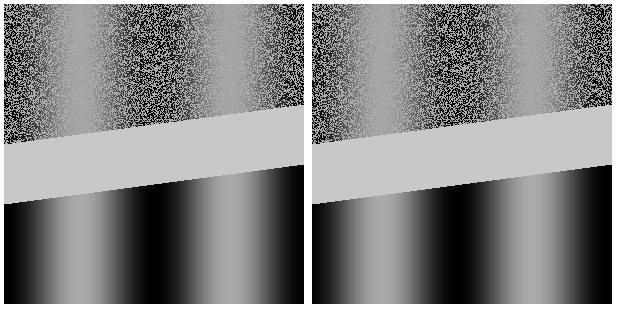
(For uncross-fuser only; see the left image with your left eye and the
right image with your right eye)
Mach-band phantoms (new!)
Mach bands (there are four) might be completed through the occluder.
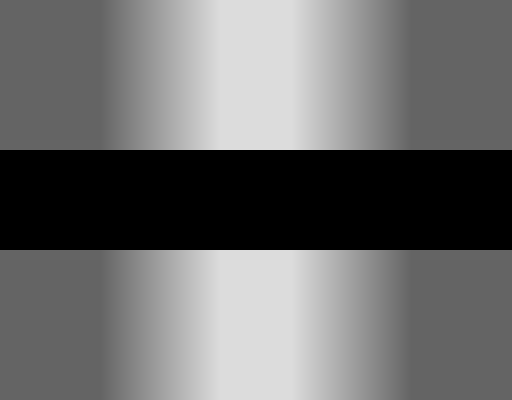
Craik-O'Brien-Cornsweet phantoms (new!)
It appears that there are light and dark regions in the gray surround though they are actually of the same luminance (Craik-O'Brien-Cornsweet's effect). When an occluder is placed, photopic phantoms appear. This means that contrast polarity of photopic phantoms is not determined by the (physical) luminance of the grating but by the (perceived) lightness of the grating.

Photopic phantoms by luminance gradients (new!)
This phantom illusion also suggests that contrast polarity of photopic phantoms is not determined by the (physical) luminance of the grating but by the (perceived) lightness of the grating. I think that surface color, not film color, is completed.
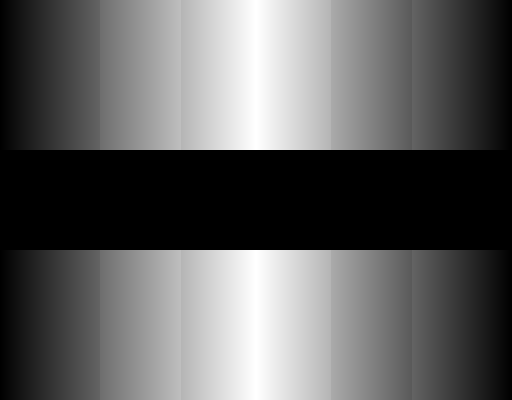
Stationary phantoms are in-phase induction if presentation is short (new!)
It is known that stationary phantoms give counterphase lightness induction in the occluder, but phantoms show in-phase induction if the presentation time is shorter than about 150 ms.
Grating induction is also in-phase induction if presentation is short (new!)
It is known that grating induction (McCourt, 1982) gives counterphase lightness induction in the occluder, but it shows in-phase induction if the presentation time is shorter than about 150 ms.
When the presentation time is longer than about 150 ms, counterphase induction appears.
These findings suggest that in-phase induction appears immediately after presentation, followed by counterphase induction. It is speculated that for stationary phantoms, in-phase components are masked by counterphase ones because the latter give stronger induction than does the former.

Kitaoka, A., Gyoba, J., Kawabata, H., and Sakurai, K. (2001). Perceptual
continuation and depth in visual phantoms can be explained by perceptual
transparency. Perception, 30, 959-968. ("Scotopic phantoms" are stationary phantoms) (Adelson-Anandan-Anderson's model of perceptual transparency)
In addition, simultaneous lightness contrast, White's effect, or Adelson-Logvinenko's effect appear immediately after presentation, suggesting that the mechanisms underlying those illusions are different from that of grating induction.
uploaded March 31, 2004